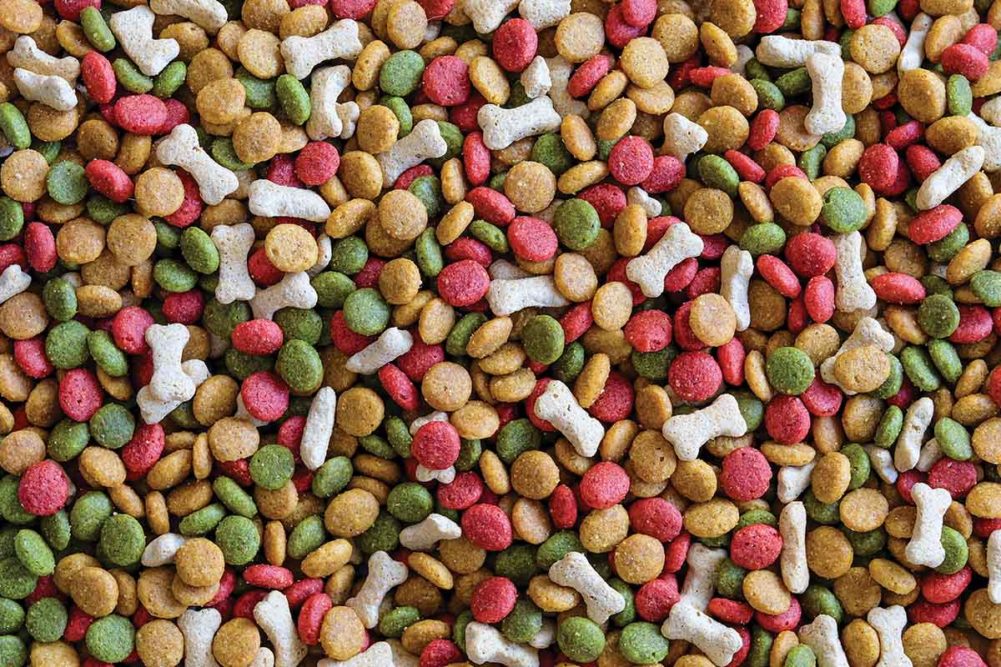The use of artificial flavors in pet food formulation has been a topic of interest for many years. This article discusses the definition, importance, types, and application of artificial flavors in pet food formulation. Artificial flavoring is an additive that is used to enhance the taste, smell, and mouthfeel of food products, including pet food. The purpose of adding artificial flavors to pet food is to make the product more palatable and appealing to the customer. This article will also discuss the benefits and potential drawbacks of using artificial flavors in pet food formulation.

Definition of Artificial Flavors
Artificial flavors are additives used in food and beverages to enhance the taste and smell of a product. Artificial flavors can be made up of various components, such as natural and artificial compounds, aromas, sweeteners, and colors. They can also include emulsifiers, stabilizers, preservatives, or antioxidants. Artificial flavors are used to create a desired flavor profile and improve the overall flavor of a food product.
Importance of Artificial Flavors in Pet Food Formulation
The use of artificial flavoring has become increasingly popular in pet food formulations. Artificial flavors can enhance the flavor, aroma, and palatability of pet food. Artificial flavors can also make pet food more attractive and appealing to pet owners. Additionally, artificial flavors can help mask the unpleasant tastes and odors that often accompany certain ingredients used in pet food.
Types of Artificial Flavors
Nutritional Value of Artificial Flavors
Some artificial flavors may offer nutritional benefits, such as increased protein content or decreased fat content. Additionally, some artificial flavors may contain prebiotics, probiotics, or other beneficial components. It is important to research artificial flavors to ensure that they provide adequate nutritional value to the pet food.
Limitations of Artificial Flavors
It is important to note that not all artificial flavors are created equal. Artificial flavors may contain ingredients that can be harmful to pets. Additionally, artificial flavors are often more expensive than natural flavors. Therefore, careful consideration should be taken when selecting an artificial flavor for pet food formulation.
Application of Artificial Flavors in Pet Food Formulation
Considerations When Adding Artificial Flavors to Pet Food
When selecting an artificial flavor for pet food formulation, it is important to consider several factors. Ingredients should be carefully evaluated to ensure that they are safe and effective for use in pet food. Additionally, the cost of the artificial flavor should be taken into account when formulating pet food.
Effects on Palatability and Taste
In order to obtain the desired flavor profile, the amount of artificial flavor added must be appropriate. Too little artificial flavor may result in a bland flavor, while too much artificial flavor may overpower the flavor of the pet food. It is also important to consider the pet’s preference when selecting a flavor.
Safety of Artificial Flavors
When using artificial flavors in pet food, it is important to consider the safety of the product. The ingredients used in artificial flavorings should be evaluated to ensure they are safe and effective for use in pet food. Additionally, the concentration of artificial flavors should be kept low in order to avoid potential adverse effects.
Conclusion
The use of artificial flavors in pet food formulation can have many benefits. Artificial flavors can enhance the flavor, aroma, and palatability of pet food. Additionally, artificial flavors may offer nutritional benefits and can help mask the unpleasant tastes and odors that often accompany certain ingredients. However, it is important to consider the potential downsides of using artificial flavors in pet food, such as the possibility of containing harmful ingredients and being more expensive than natural flavors. Further research is needed to better understand the effects of artificial flavors on pet health and nutrition.
